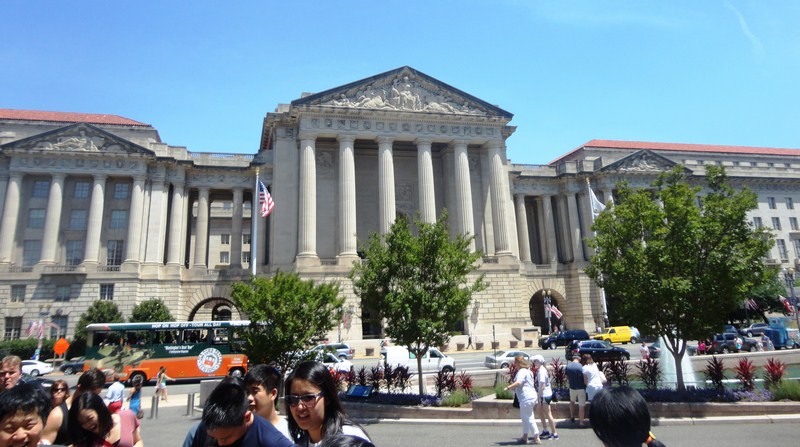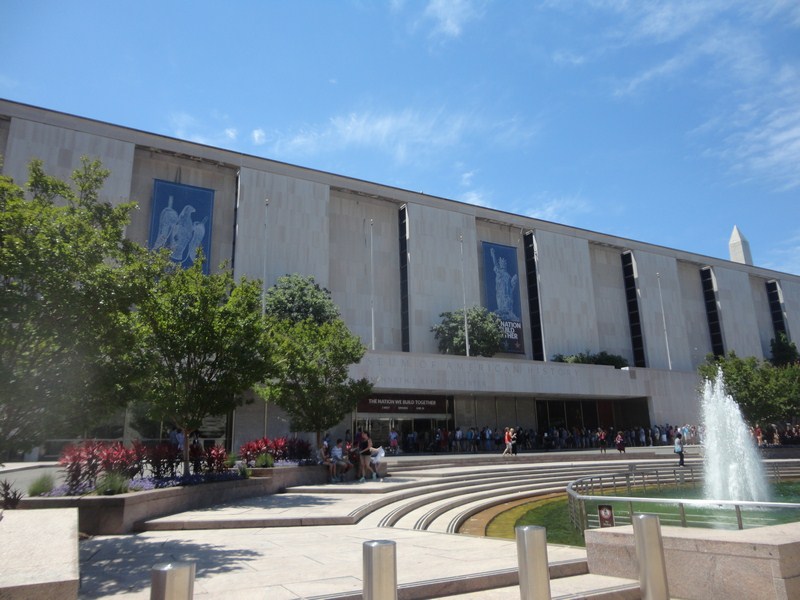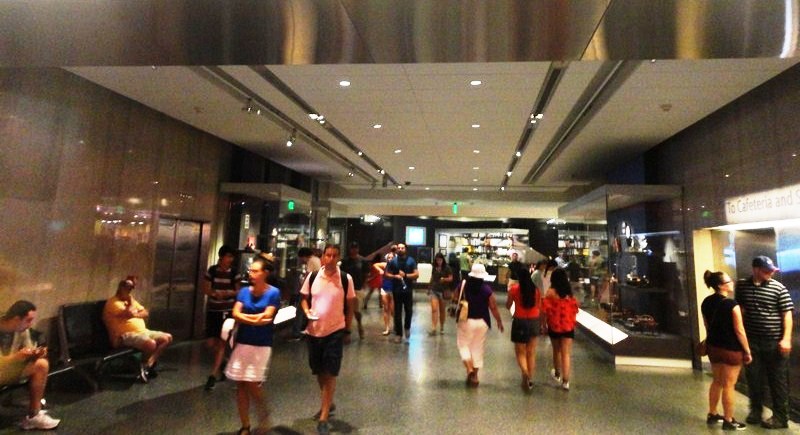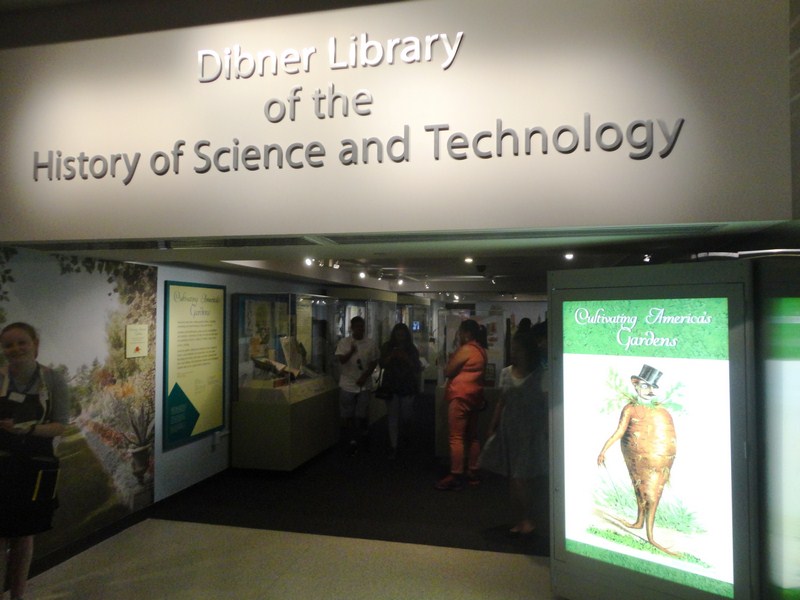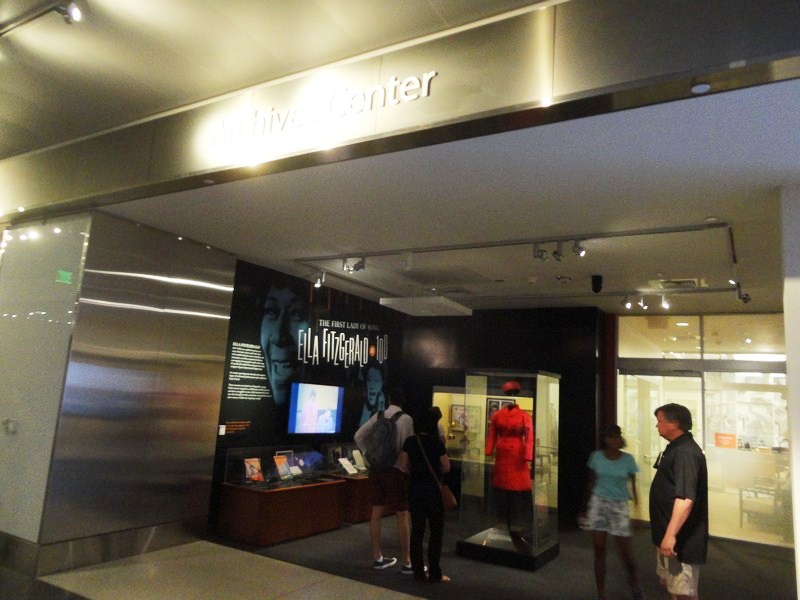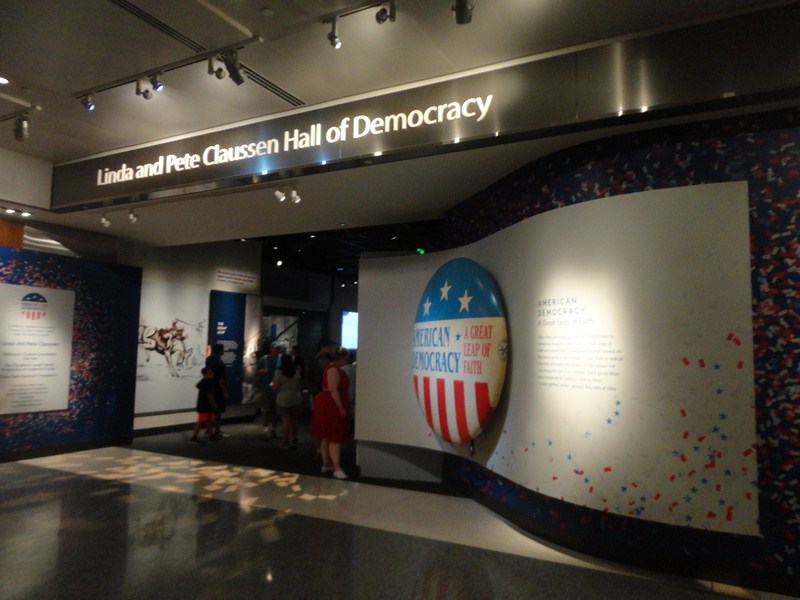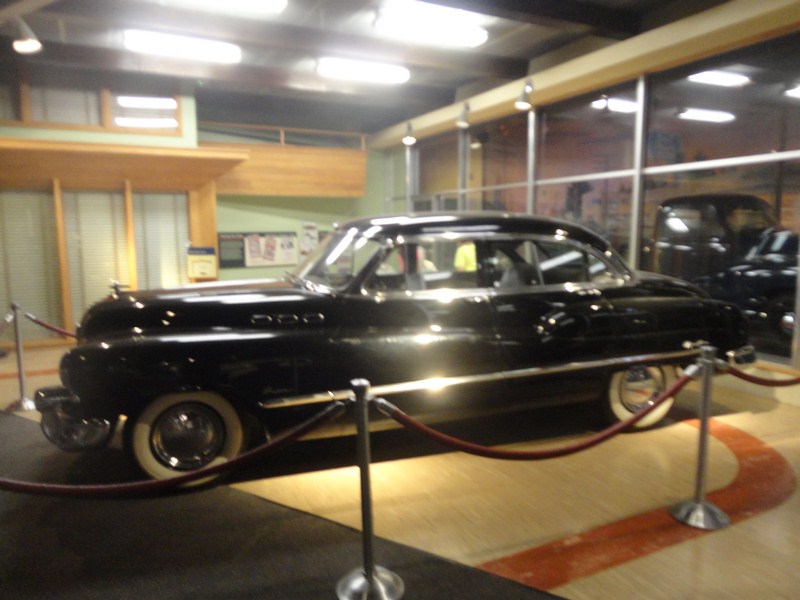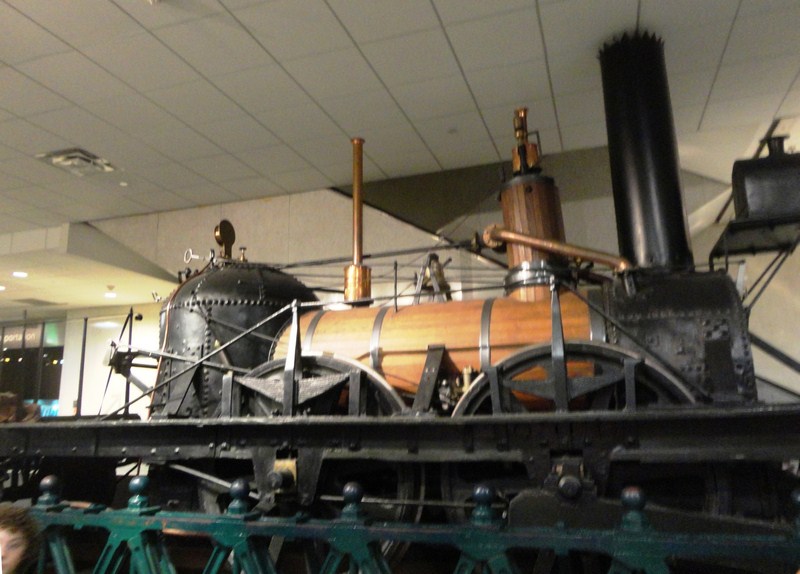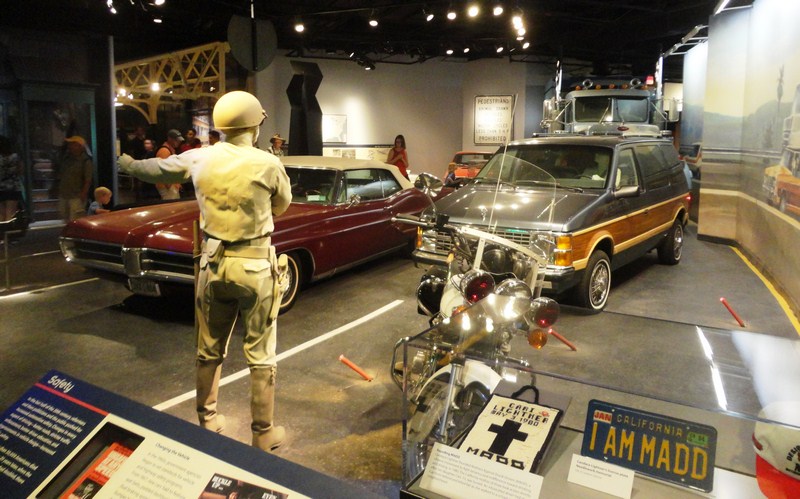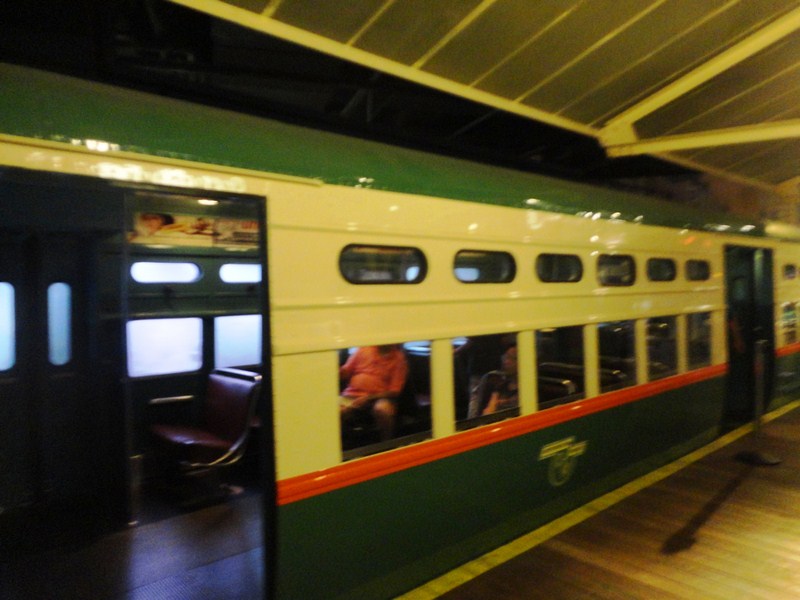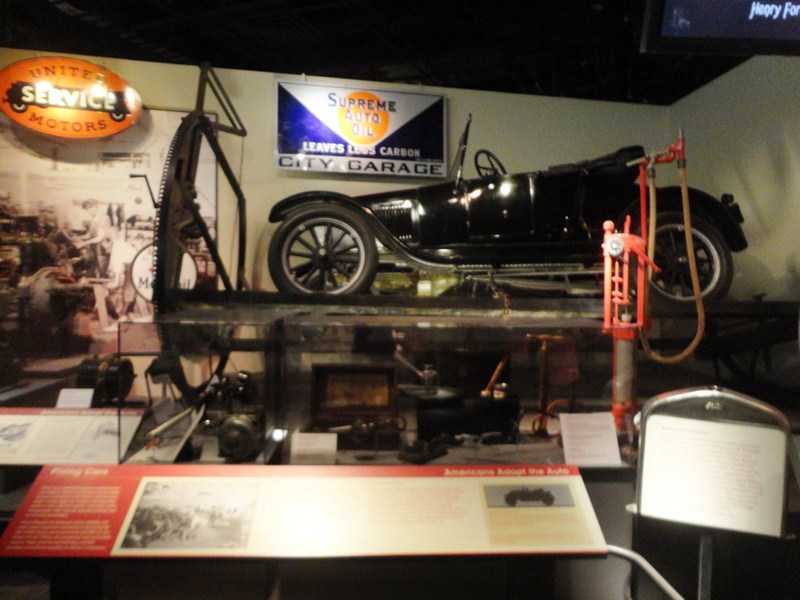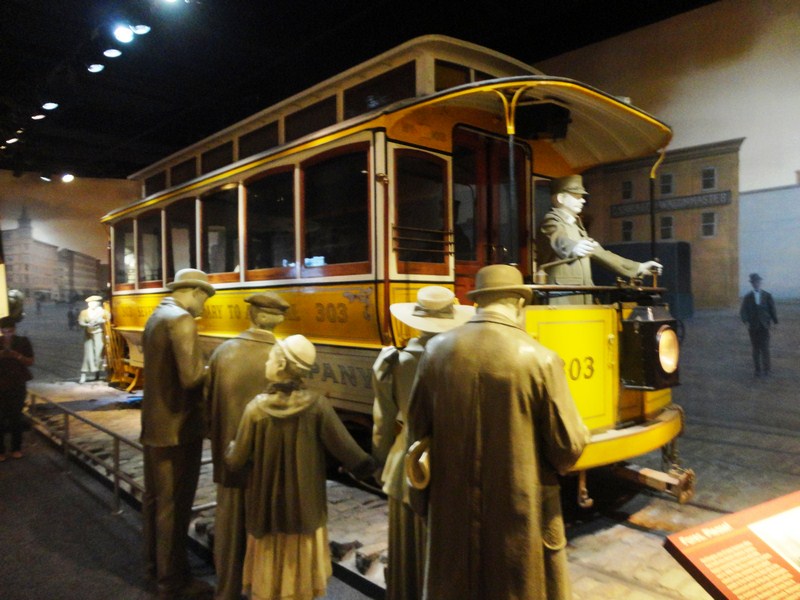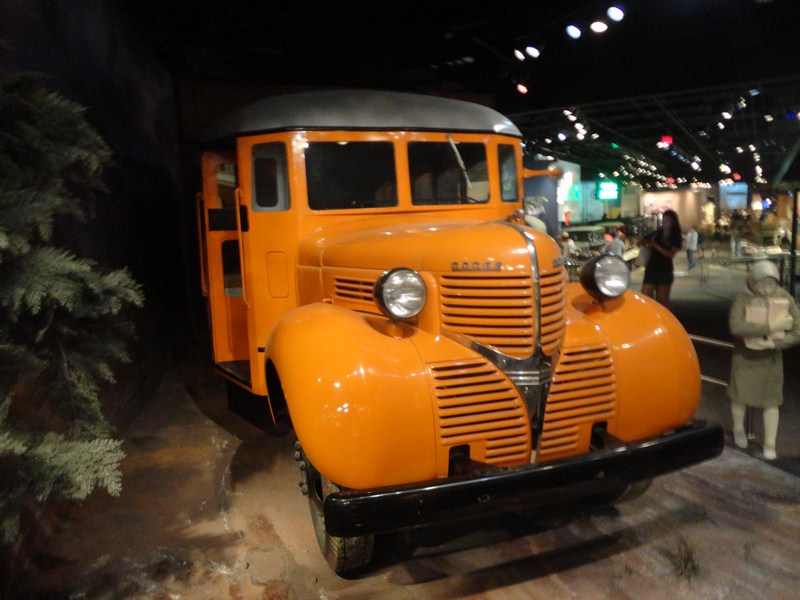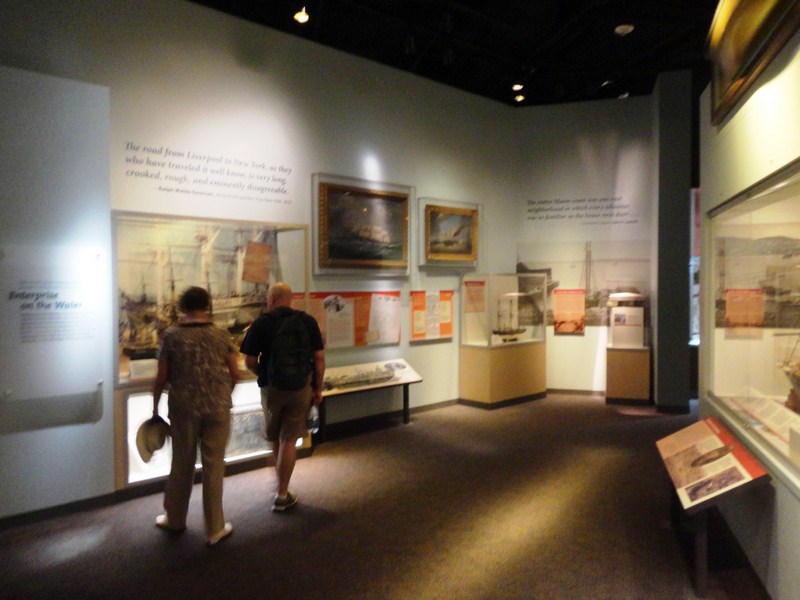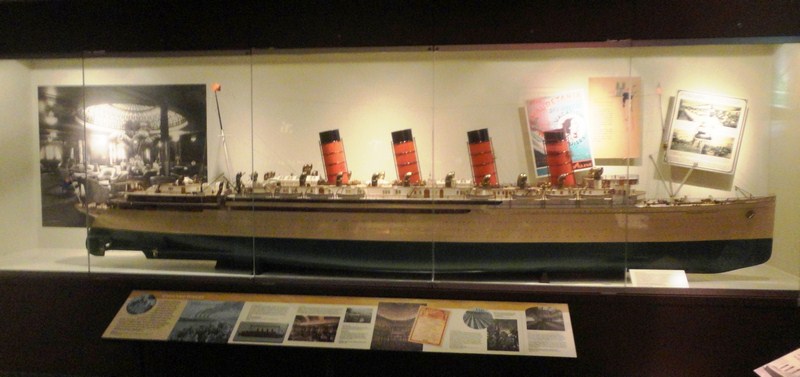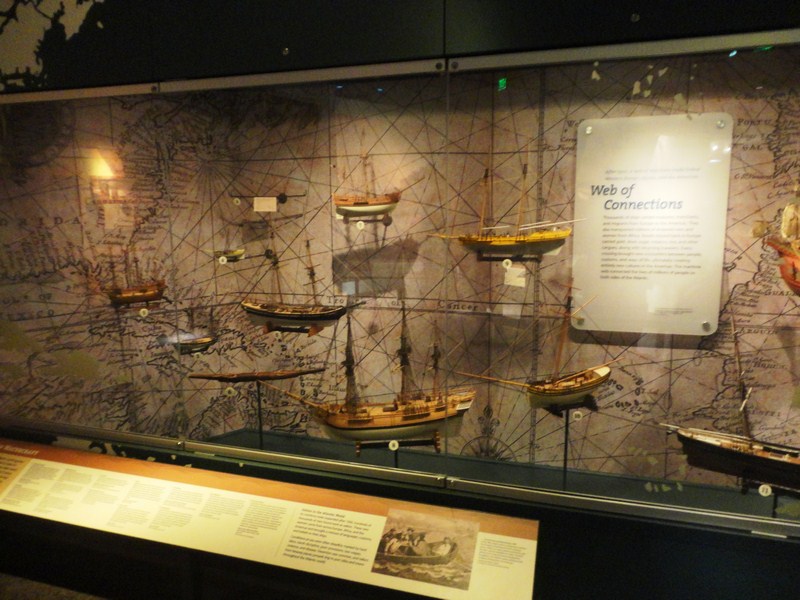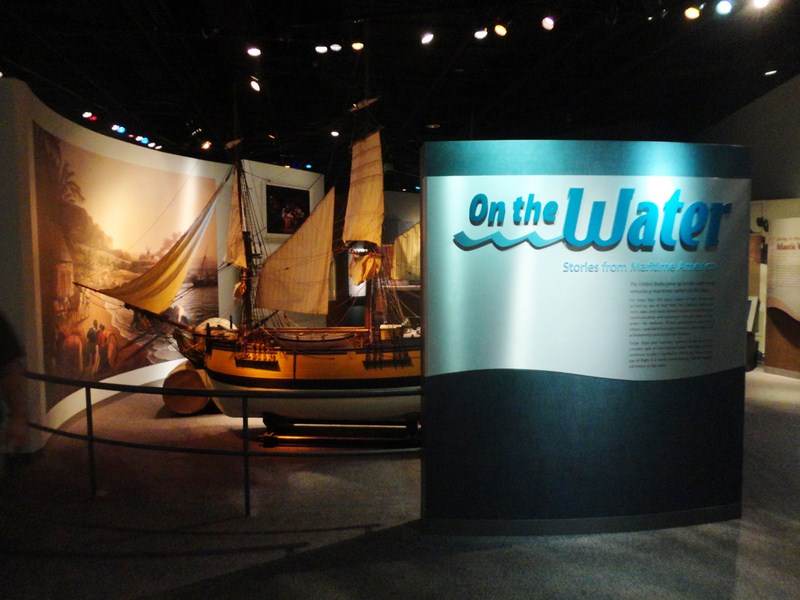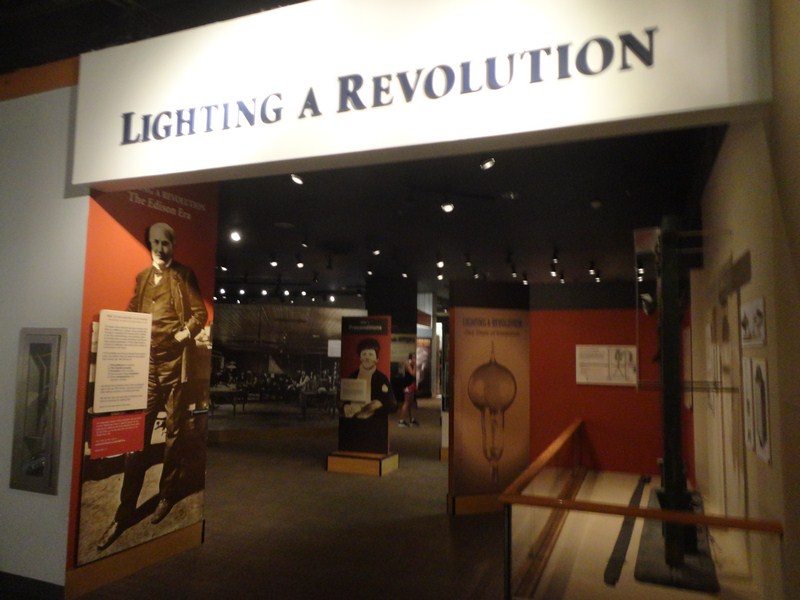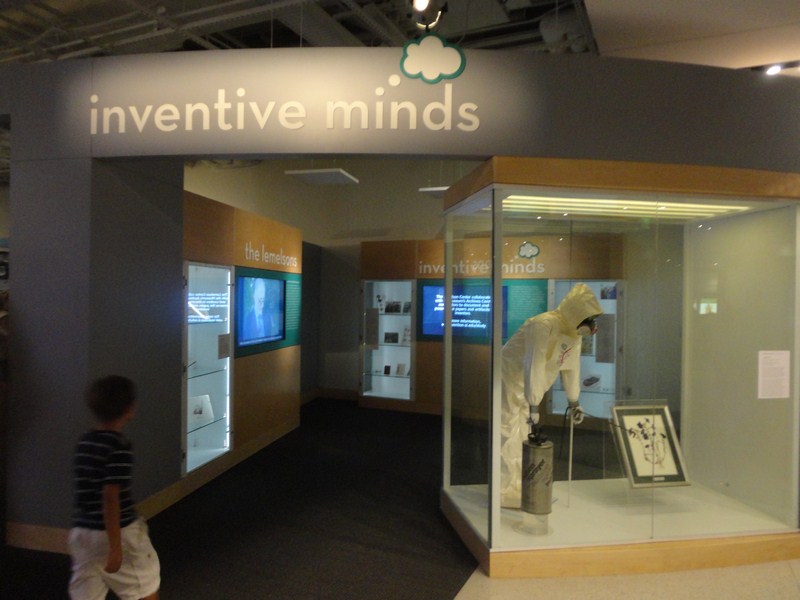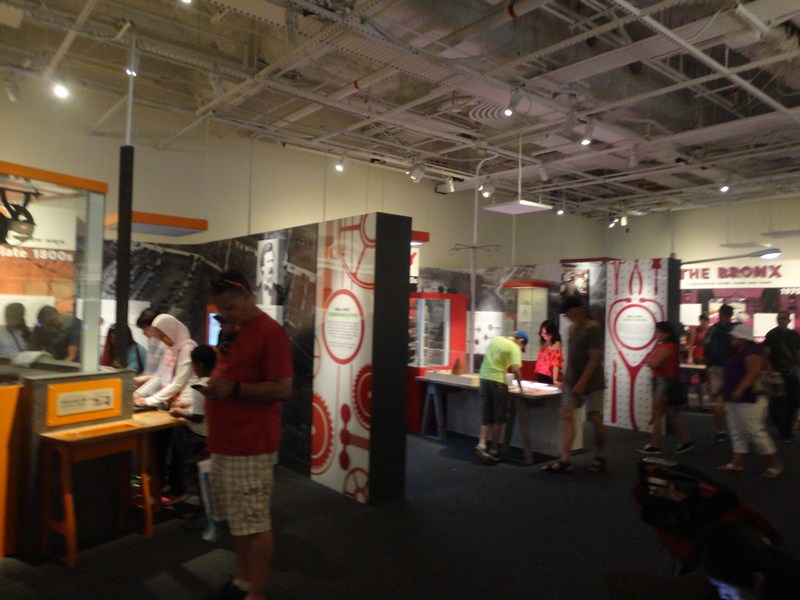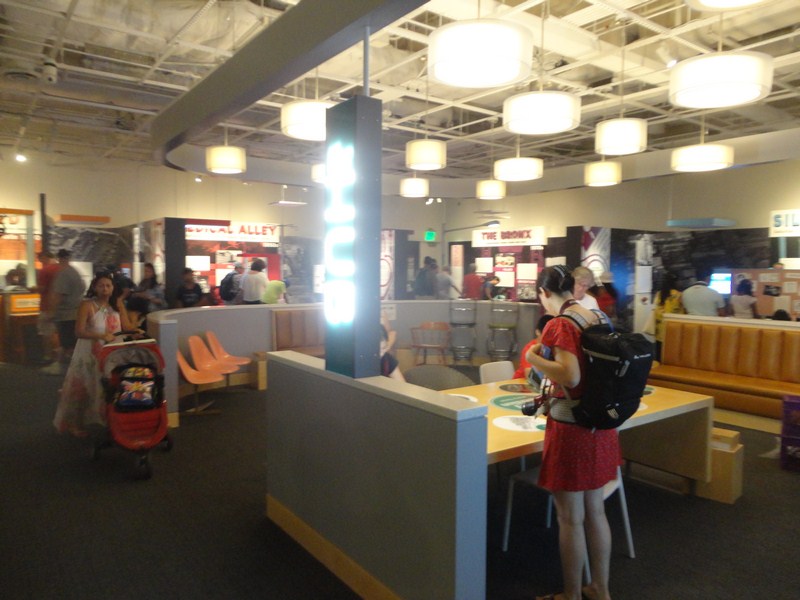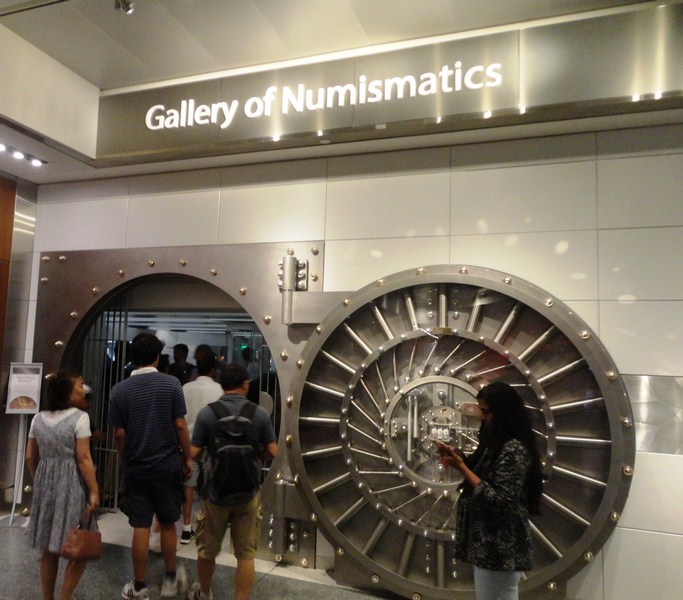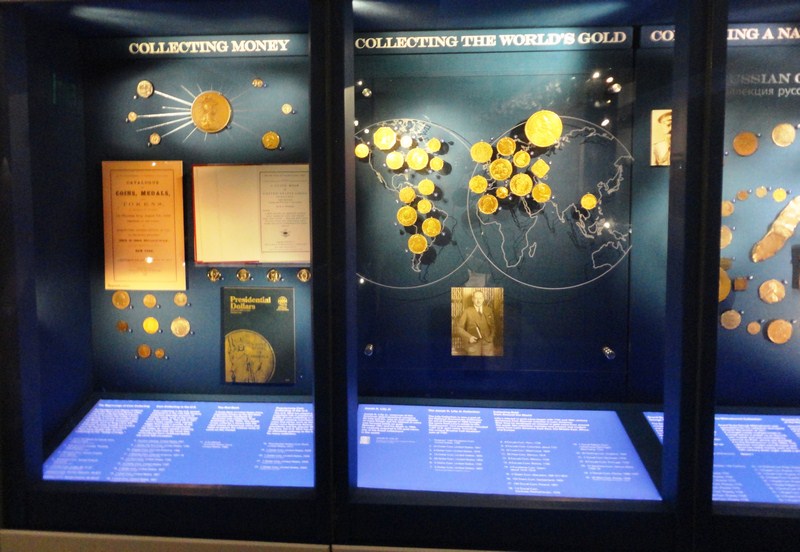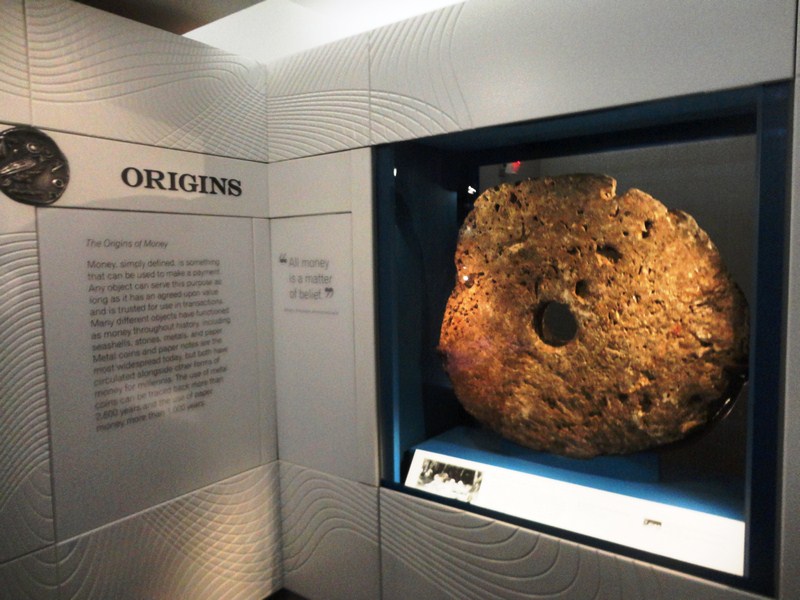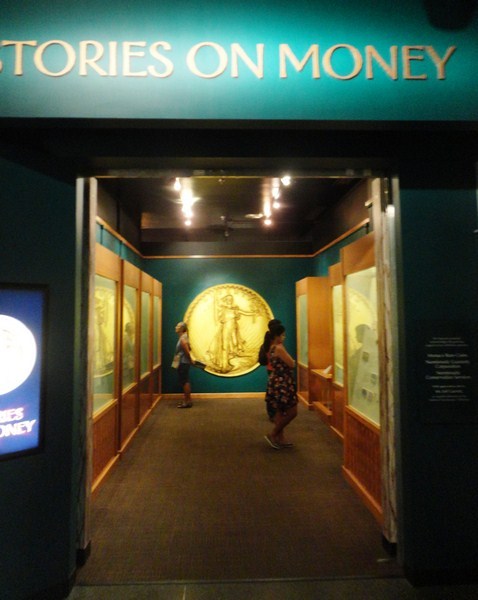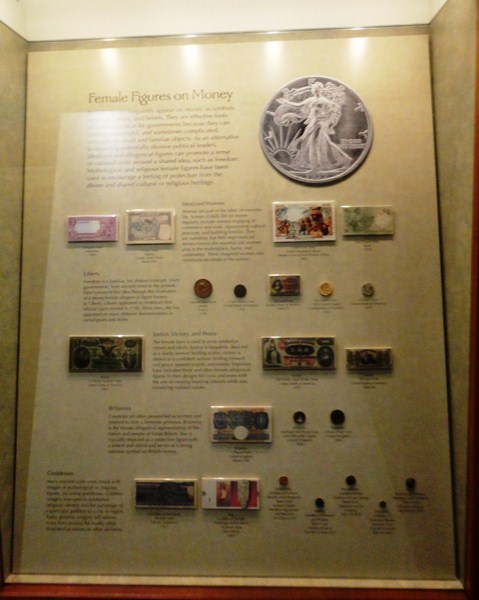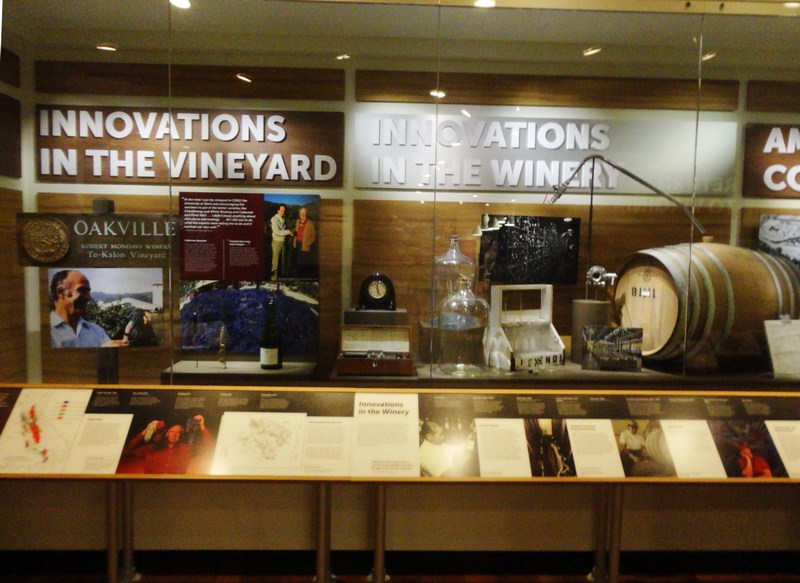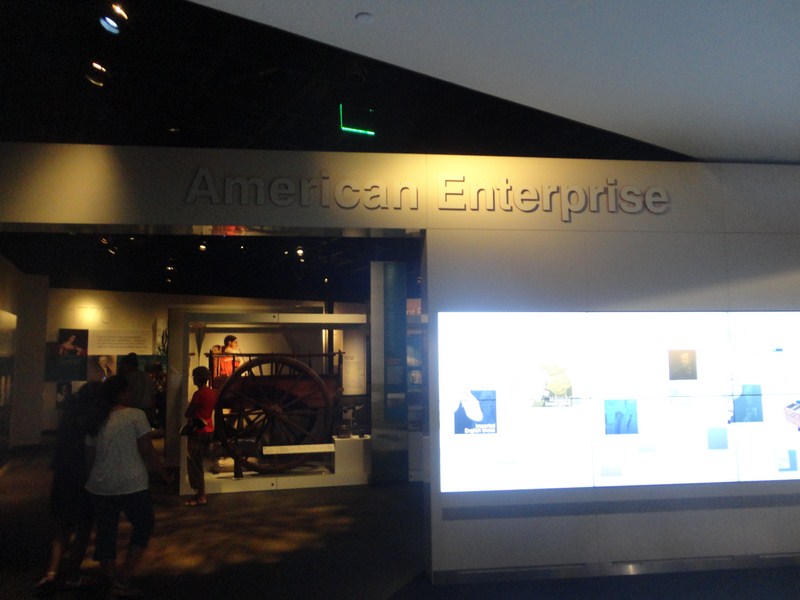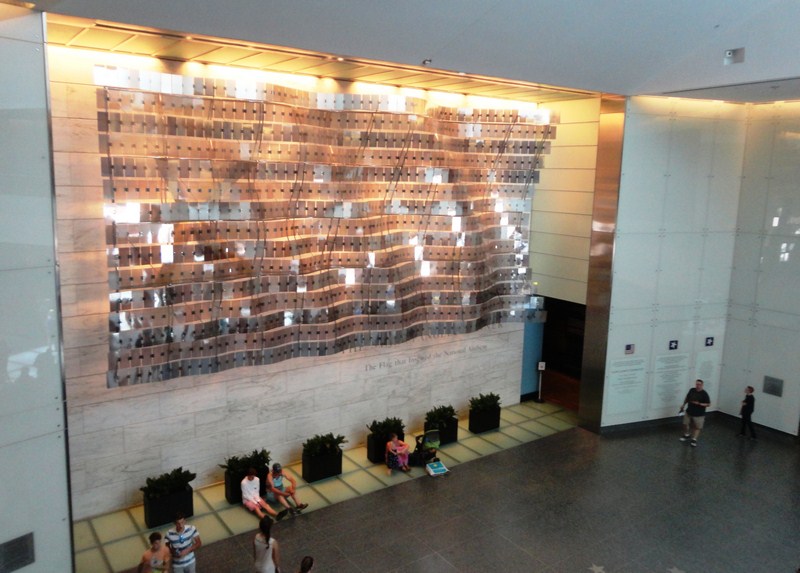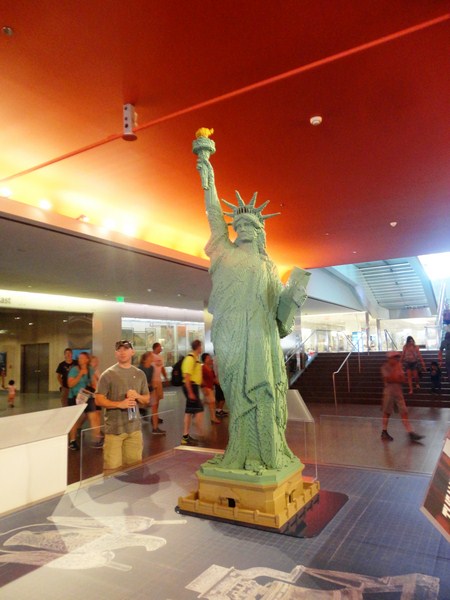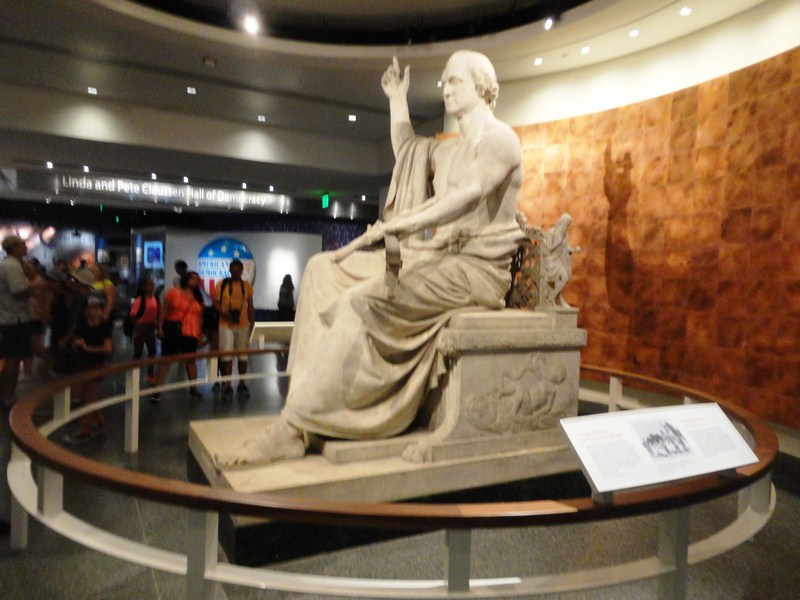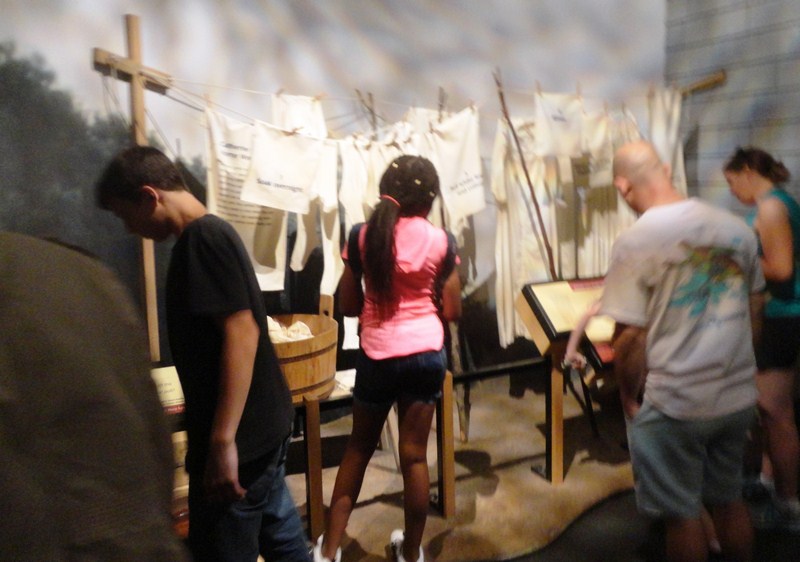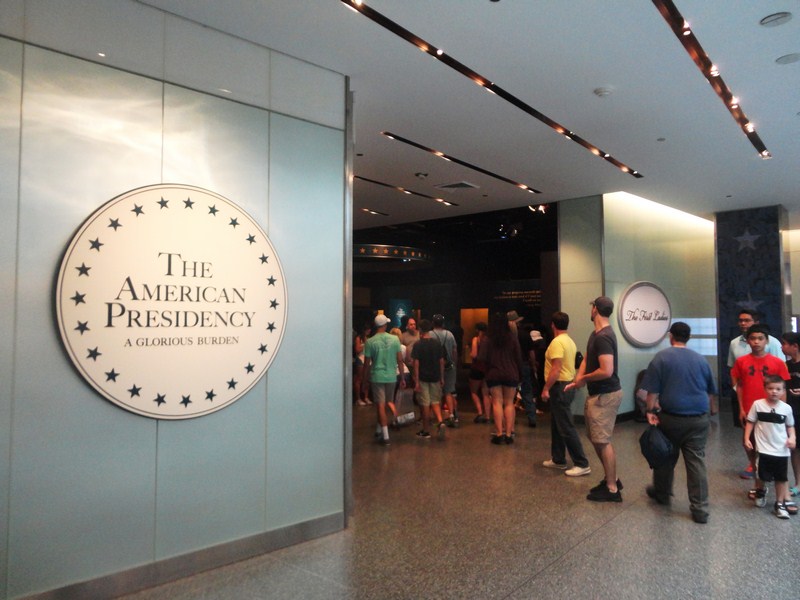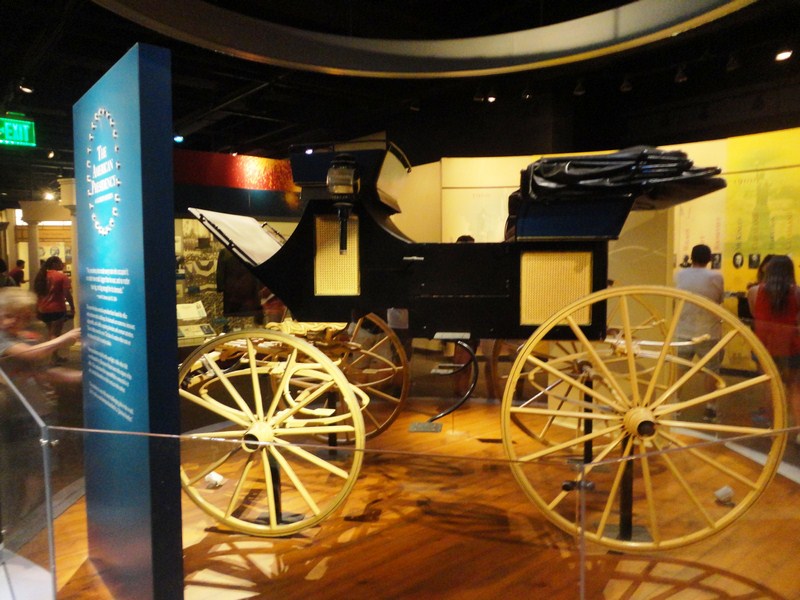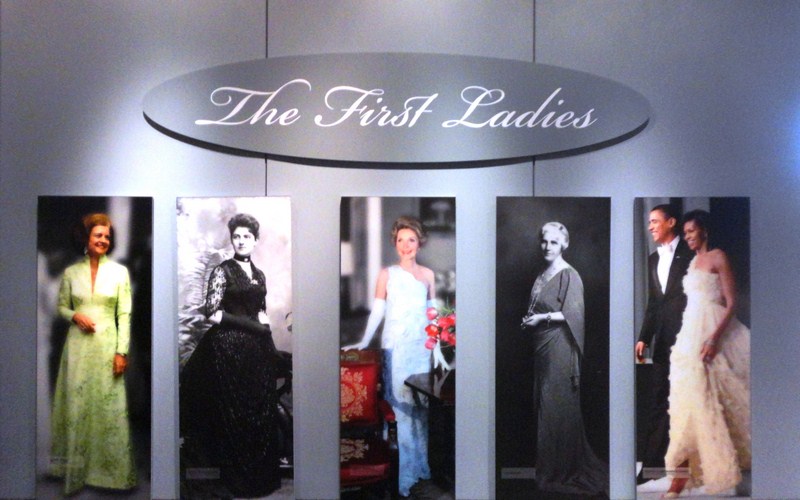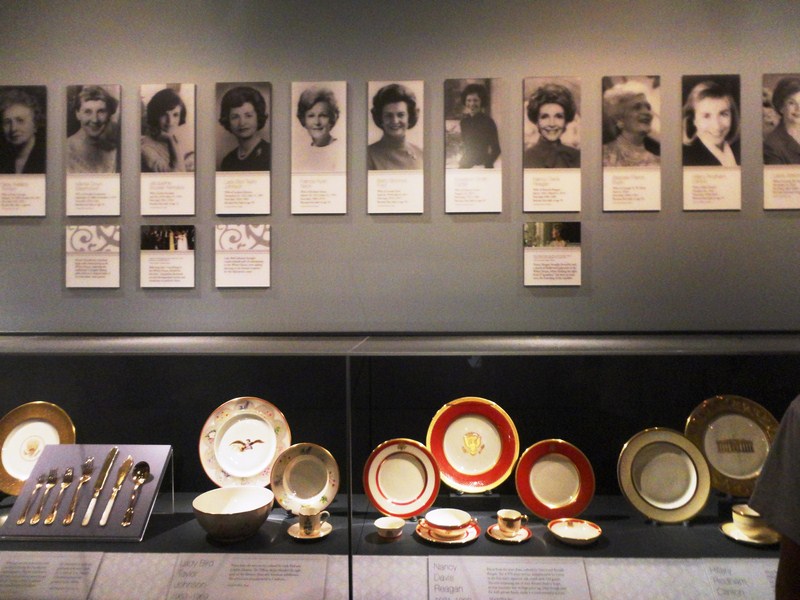The National Museum of American History (NMAH): Kenneth E. Behring Center, a museum that is part of the Smithsonian Institution, collects, preserves, and displays the heritage of the United States in the areas of social, political, cultural, scientific and military history. The first of the National Mall’s post-war Brutalist behemoths. It consists of three H-shaped floors with a central axis leading to exhibition space on either side.
Opened in 1964 as the Museum of History and Technology, it was one of the last structures designed by the renowned architectural firm McKim Mead & White, the firm that initiated the Classical Revival on the Mall with its 1910 Beaux Arts National Museum of Natural History. In 1980, the museum was renamed the National Museum of American History to represent its mission of the collection, care, study, and interpretation of objects that reflect the experience of the American people.
From September 5, 2006 to November 21, 2008, the museum was closed when it underwent an US$85 million renovation. Skidmore, Owings and Merrill, led by Gary Haney, provided the architecture and interior design services for the renovation.
Major changes made include a new, five-storey, skylit atriums surrounded by displays of artifacts that showcase the breadth of the museum’s collection; a new, grand staircase that links the museum’s first and second floors; a new welcome center; the addition of six landmark objects to orient visitors; new galleries such as the Jerome and Dorothy Lemelson Hall of Invention; and an environmentally controlled chamber to protect the original Star-Spangled Banner.
In 2012, the museum began a US$37 million renovation of the west wing; adding new exhibition spaces, public plazas, an education center, panoramic windows overlooking the National Mall on all three floors and new interactive features to the exhibits. On July 1, 2015, the first floor of the west wing reopened and, in 2016 and 2017 respectively, the second and third floors of the west wing were reopened.
Visitors can enter the vast NMAH building either from the on-grade National Mall entrance or from the below-grade Constitution Avenue entrance (a walled terrace bridges the differing heights), both minuscule apertures that are not fitting entrances that furnish a sense of grandeur or importance to a museum built to tell America’s story. At its National Mall entrance is Infinity, a 7.3 m. (24-ft.) tall abstract sculpture (one of the first abstract sculptures displayed at a major public building in Washington D.C.) dedicated in 1967. Designed by José de Rivera and created by Roy Gussow, the sculpture is a 4.9 m. (16-ft.) long, polished stainless steel ribbon on top of a granite tower.
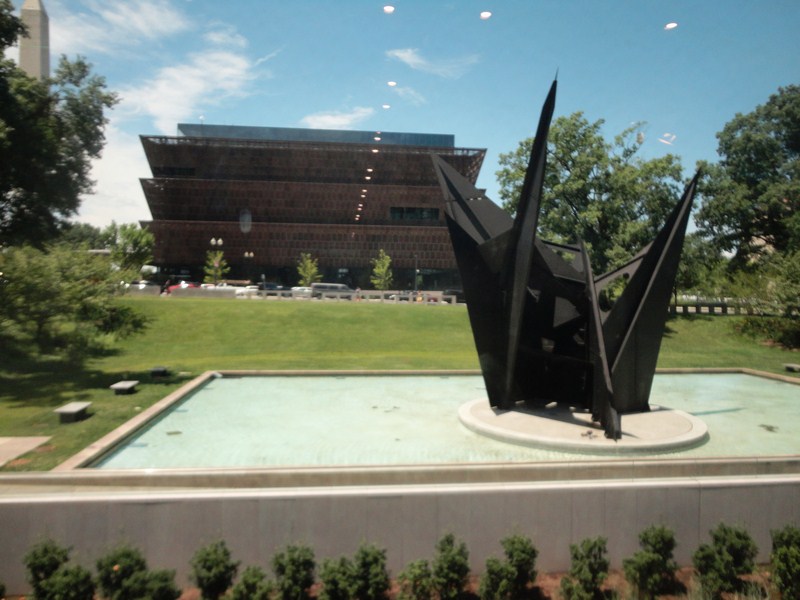
Alexander Calder’s steel sculpture Gwenfritz. In the background is the National Museum of African American History and Culture
We entered the museum via the latter. Here, on the west side, is Alexander Calder‘s sculpture, Gwenfritz, a 35-ton steel abstract stabile (named after its socialite patron Gwendolyn Cafritz) installed in a fountain and dedicated to the museum on June 2, 1969. The long entrance hall, like many other areas of the building, is poorly illuminated and dispiriting. During our visit, the west side of the second floor was undergoing refurbishment through the end of 2017, and the west side of third floor until 2018.
Artifact walls line the first and second floor center core, with dimly lit 84 m. (275 ft.) of glass-fronted cases, each crammed with hundreds of random objects, big and small, are organized around themes that include arts; popular culture; business, work and economy; home and family; community; land and natural resources; peopling America; politics and reform; science; medicine; technology; and the United States’ role in the world.
A landmark object highlights the theme of each wing of the museum’s three exhibition floors. These include the John Bull locomotive, the Greensboro, Woolworth’s North Carolina lunch counter (where four legends from North Carolina A&T State University staged a sit-in in 1961 to protest segregation), a one of a kind draft wheel and, from pre-existing exhibits, the 1865 Vassar Telescope, a Red Cross ambulance and a car from Disneyland‘s Dumbo Flying Elephant ride.
The first floor contains a café, the main museum store, the Constitution Avenue lobby (1 Center) as well as a space for temporary exhibits. 1 East, the first floor’s East Wing, houses the General Motors Hall of Transportation which has series of two transportation-related exhibits that are roughly related – “America on the Move” (opened November 22, 2003) and its companion exhibition, “On the Water: Stories from Maritime America” (opened on May 20, 2009). One of the best parts of the museum, the John Bull locomotive is the signature artifact.
“America on the Move,” designed by the Museum Design Associates of Cambridge, Mass.; AMAZE Design of Boston; and the Smith Group, of Washington, D.C., encompasses nearly 26,000 sq. ft. on the first floor of the museum, and includes 340 objects and 19 historic settings in chronological order.

Roadside Communities: Tourist cabin at Ring’s Rest (Muirkirk, Maryland). On the left is a 1934 Ford Deluxe Roadster
It takes visitors on a fascinating journey, from the coming of the railroad to a California town in 1876 to the role of the streetcar and the automobile in creating suburbs to the global economy of Los Angeles in 1999, as they travel back in time and experience transportation, through multimedia technology and environment, as it changed America, seeing historic artifacts as they once were, a vital part of the nation’s transportation system and of the business, social, and cultural history of the country.
The Smithsonian’s popular and voluminous collection of the many and varied forms of rare, fascinating, and important transportation is showcased in historic settings brought to life by large mural backdrops, 73 cast figures and soundscapes.
It includes the horse-drawn cart, early automobiles, the electric car, buses, a Chicago Transit Authority “L” car, a massive 199-ton, 92-foot-long “1401” Southern Railway locomotive and a gigantic 1930’s steam engine plus a 40-foot stretch of the famed Route 66.
The brilliantly conceived and beautifully executed “On the Water: Stories from Maritime America,” a pleasing and instructive museum experience on the left side of the entrance of General Motors Hall of Transportation, leads the visitor through 7 topical/chronological sections that span American maritime history from 1450 to the present.
It explores the many ways in which Americans, from Colonial times to the present, have pursued commerce at sea and on America’s extensive coastal and inland waterways through impressive artifacts, flawless audiovisual aids, instructive texts, and a powerful aesthetic.
The 8,500 sq. ft. exhibit seamlessly carries the visitor through topics as diverse as commercial fishing, passenger liners, the slave trade, container ships, and the contributions of the merchant marine to victory in World War II.
On display are rigged ship models (including a large model of the tobacco ship Brilliant) representing the web of vessels that transported sugar, tobacco and slaves; a wooden snuff box carved into the shape of a potbellied man (with one eye bulging, the other missing) that connects vast trade systems to everyday consumer habits; a real-life steam engine room; a Fresnel lighthouse lens that lit waters 17 miles afar; a tucked-away safety vest invention that appears to be a twin mattress folded, diaper-like, under the wearer’s torso; and the first sliver of gold found at Sutter’s Mill that precipitated the California Gold Rush.
The “Lighting a Revolution” exhibition, opened at 1 East to commemorate the centennial of Thomas Edison’s light bulb, considers experiments with electricity before Edison’s, the “Invention Factory” at Menlo Park, how Edison created a market for his product, and the impact of electricity in factories, on city streets, and in the home.
The exhibition features a bulb from a public demonstration of Edison’s light in Menlo Park during Christmas week, 1879; and early electrical appliances for the home, some of which caught on, such as electric fans, and some which did not, namely the electric marshmallow toaster.
The large but sparsely furnished “Lemelson Hall of Invention and Innovation,” opened July 1, 2015, features “Places of Invention,” Draper Spark!Lab and “Inventive Minds.” “Places of Invention” is centered on the theme of innovation, where the museum is transforming how its audiences will experience history.
“Inventive Minds,” a small gallery, introduces visitors to the work of the Lemelson Center, particularly its efforts to document diverse American inventors. Draper Spark!Lab, a hands-on exhibit, has the Vassar Telescope as its signature artifact.
The exhibition features 37 objects illustrating the inventions at the heart of each case study. Highlighted objects include a Technicolor camera used to film The Wizard of Oz; a turntable used by Grandmaster Flash; the prototype of the first computer mouse invented by Douglas Engelbart at the Stanford Research Institute (on loan from SRI International); 1886 Columbia Light Roadster men’s high-wheel bicycle; an example of the Medtronic 5800 Model External Pacemaker invented by Earl Bakken; and several prototypes representing cutting-edge clean energy inventions coming out of Fort Collins.
In addition, there are five interactive stations set up on tables where visitors can participate in fun, hands-on learning experiences such as designing their own eight-bit icon (Silicon Valley section) or learning and practicing their DJ “scratching” skills (The Bronx section). However, objects such as a jukebox, a Howdy Doody puppet and a pink Patsy Cline costume do not necessarily bring the word “invention” to mind.
The Gallery of Numismatics, opened July 1, 2015 at 1 West, delves into the world-class National Numismatic Collection (NNC), one of the Smithsonian’s oldest and most treasured collections (with more than 1.6 million objects), to uncover stories related to the origins, innovations, messages, artistry and allure of money.
Entered via a vault door, it showcases more than 400 objects from the NNC, some of which are among the rarest in the world. The exhibition, thematically organized into five sections, allows visitors to learn about the origins of money, new monetary technologies, the political and cultural messages money conveys, numismatic art and design, and the practice of collecting money.
Featured American objects includes a storied 1933 Double Eagle, a personal check signed by Pres. James Madison in 1813, a 1934 US$100,000 note and a Depression-era $1 clam shell. International artifacts include a 168-pound stone ring used to make payments on Island of Yap, a 465 B.C.; a decadrachma coin from Syracuse, Sicily; a 14th-century Ming Note from China and a 1762 8 Real Coin from Mexico (also known as a Spanish piece of eight). The gallery will also showcase the famous Josiah K. Lilly Jr. collection of gold coins and the Grand Duke Georgii Mikhailovich collection of Russian coins (thought to be the finest outside of Russia).
“Stories on Money,” a numismatic exhibition housed in a small room, comprehensibly traces the historical and aesthetic evolution of US banknotes and coinage through a skillfully culled collection.
“Food: Transforming the American Table, 1950-2000,” a 3,800 sq. ft. exhibition opened last November 20, 2012 in 1 East, is a creative blend of objects, graphics, video and an interactive, communal table that highlights how American eating and shopping habits have changed during those five decades.
Julia Child‘s Home Kitchen, the opening story of the museum’s first major exhibition on food history, contains the tools, appliances, equipment, and furnishings arranged exactly as they were when Julia donated it to the museum. New and Improved!” explores the innovations behind some of the major changes in food production, distribution, preparation, and consumption since the 1950s.
At Wine for the Table, discover how new technologies, innovators, and changing attitudes led to the tremendous growth and expansion of wine and winemaking, an important story in postwar America, in all 50 states by 2000.
At Open Table, the public is invited take a seat at a large, communal table, in the center of the exhibition, and engage in conversation about a wide range of food-related issues and topics, sharing their own thoughts and experiences about food and change in America.
The 8,000 sq. ft. American Enterprise, opened last July 1, 2015 at 1 West, focuses on the role of business and innovation from the mid-1700s to the present. It chronicles the tumultuous interaction of capitalism and democracy that resulted in the continual remaking of American business—and American life.
Visitors are immersed in the dramatic arc of labor, power, wealth, success, and failure in America. It traces the development of the United States from a small dependent agricultural nation to one of the world’s largest economies through the following 4 chronological eras: the Merchant Era (1770s – 1850s), the Corporate Era (1860s – 1930s), Consumer Era (1940s – 1970s), and the Global Era (1980s – 2010s). On display are John Deere’s plow, Eli Whitney’s cotton gin, Barbara McClintock’s microscope, Stanley Cohen’s recombinant DNA research notebook, Alexander Graham Bell’s first telephones, Alfred Bloomingdale’s personal credit cards, a New York Stock Exchange booth from 1929, an early Monopoly board game and one of Michael Dell’s early computers.
The second floor of the museum, whose lobby leads out to Madison Drive and the National Mall, houses the museum’s new welcome center and a store. 2 West, the west wing of the second floor, has the George Washington statue (created in 1840 for the centennial of Washington’s birthday) as its signature artifact. The Wallace H. Coulter Unity Square, at 2 West, is the floor’s new program space dedicated to immersive activities and performances that richly illustrate America’s participatory democracy. At the center of Unity Square, is the Greensboro lunch counter, a small section of the original F.W. Woolworth’s Lunch Counter from Greensboro, N.C. 2 East, at the east wing of the second floor, has exhibitions that consider American ideals.
The original, newly conserved Star Spangled Banner Flag, in 2 East, the center of the second floor, is displayed in a dimly lit room, at the heart of the museum, with a climate-controlled environment to help preserve its color and fabric.. During the War of 1812, it was the same flag seen by Francis Scott Key come morning, after a long nighttime battle, above Fort McHenry, outside Baltimore, Maryland, signifying that the U.S. defenses had held.
Check out “Fort McHenry National Monument and Historic Shrine – Birthplace of the Star-Spangled Banner“
This marked the penultimate major battle in the war, which ended a few weeks later. It inspired him to write the poem which is now the U.S. national anthem. In the days and years after the battle, the flag was flown in all kinds of weather, and parts were snipped off as souvenirs. Just across the room from the flag is an interactive display by Potion Design featuring a full-size, digital reproduction of the flag that allows patrons to learn more about it by touching different areas on the flag.
The 9 ft. tall Statue of Liberty, at 2 West, is made of sand green LEGO bricks and weighing 125 pounds without its steel support.
The 12-ton marble George Washington Statue, atop a granite pedestal and base, was created in 1841 (on the occasion of the centennial of the first president’s birthday) by Horatio Greenough. Envisioned to be a symbolic representation of Washington as a great exemplar of liberty, it depicts Washington wearing a chest-baring toga.
The 4,200 sq. ft. Within These Walls Exhibit, opened last May 16 2017 in 2 West, tells the stories of five families who lived in Ipswich, Massachusetts, about 30 miles north of Boston, over the years and made history in their kitchens and parlors, through everyday choices and personal acts of courage and sacrifice. Through their lives, the exhibition explores some of the important ways ordinary people have been part of the great changes and events in American history.
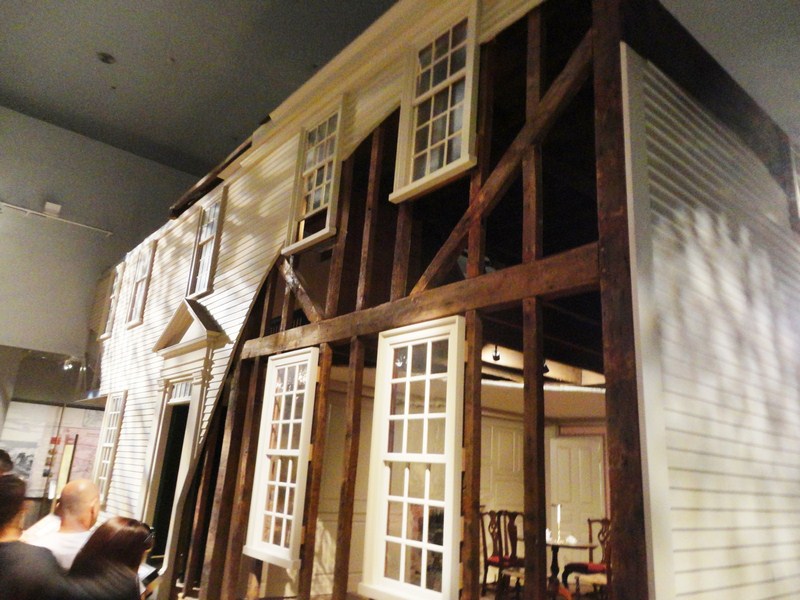
The partially reconstructed Georgian-style, two-and-a-half-story timber-framed house, built around 1700
At the center of the gallery is the largest artifact in the museum, a partially reconstructed Georgian-style, two-and-a-half-story timber-framed house, built around 1700, that stood for 200 years at 16 Elm Street and was saved from demolition by an Ipswich citizen and then brought to the Smithsonian Institution.
The exhibition also features an 18th-century tea table; an anti-slavery almanac and the Wedgwood Anti-Slavery medallion; a Philco radio from the 1930s; and World War II-era cookbooks, posters, rationing coupons and a proximity fuse used to detonate bombs and artillery shells.
3 Center, the center of the third floor, presents The American Presidency: A Glorious Burden, which explores the personal and public lives, ceremonial and executive actions of the 43 men who have held that office and had a huge impact on the course of history in the past 200 years. Composed of 11 thematic sections, the exhibition addresses such topics as inaugural celebrations, presidential roles, life at the White House, limits of presidential power, assassinations and mourning, the influence of the media, and life after the presidency.
The role of the presidency in American culture is brought to life by more than 900 objects, including national treasures from the Smithsonian’s vast presidential collections.
They include Abraham Lincoln‘s life mask; a Lewis and Clark Expedition compass; the horse-drawn carriage that carried Ulysses S. Grant in his second inaugural parade in 1873; a radio microphone used by Franklin D. Roosevelt to give his fireside chats during World War II; an early teddy bear (named after Theodore Roosevelt) and Bill Clinton‘s saxophone.
The First Ladies of America, a popular permanent exhibit also at 3 center, encourages visitors to consider the contributions and changing role played by the first lady and American women over the past 200 years by exploring the unofficial but important position of First Lady and the ways that different women have shaped the role to make their own contributions to the presidential administrations and the nation.
The exhibition features, as a mark of changing times, more than two dozen gowns from the Smithsonian’s almost 100-year old First Ladies Collection. It includes those worn by Frances Cleveland, Lou Hoover, Jacqueline Kennedy, Laura Bush and Michelle Obama. A section, entitled “Changing Times, Changing First Ladies,” highlights the roles played by Dolly Madison, Mary Lincoln, Edith Roosevelt, and Lady Bird Johnson and their contributions to their husband’s administrations.
National Museum of American History: Kenneth E. Behring Center: 14th Street and Constitution Avenue NW, National Mall, Washington, D.C. Admission is free. Open daily (except December 25), 10 AM – 5:30 PM.

